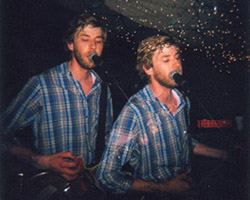Josh Clark’s Indie Recording Tips: DIY Tracking Basics
By Josh Clark
So you’re a band or musician that needs to record. Cheaply. You have a rehearsal space with a reasonable level of isolation and some basic recording gear. It can be done, but as easily as it could sound great, it could also come out sounding terrible.
It’s hard to know what you’ll get when you’re embarking on these projects in your cramped rehearsal space for the two-hour slot you get each week while waiting for your neighbors, Head X-Plosion to finish playing their 10 minute metal opera. There are a lot of variables and in this case the most important is experience, the one thing you’re most likely lacking.
I’ll assume you’ve already got a digital setup like Pro Tools or Cubase and know enough to get in trouble. Most of you can get this far with few problems and have successfully recorded and combined some tracks to form a completed recording but you’re wondering why it doesn’t sound cool.
My premise is basically “if you can’t do it professionally, make it interesting and unique.” Here’s some advice on how to do that.
Keeeeep it cheap and simple.
If you are looking for mics to buy, the best bet is to buy older, used dynamic mics as they are plentiful on Ebay or Craigslist, cheap and are usually in great working order since they need little maintenance. Old EVs are great and really anything under $100 is going to be worth it somehow.
A weird sounding dynamic is probably going to be a lot more useful than a new $200 overly bright, harsh condenser made in China. Condensers also need phantom power. Maybe you knew that, maybe not. Now that you’ve got four “new” mics for $150, add a couple SM57s and you’ve got the important stuff. Feel happy that you didn’t buy a $300 mic that you couldn’t sell for $150 when you realize that another works best for you.
Find a good sounding space or modify the space you’re in.
There’s so much advice on acoustic treatment and I’d guess that 50% is bull and the other 50% probably won’t apply to you.
If you’re like most of us, your space is small and covered in drywall. If the walls are bare, spread everything out in the room so every wall has something in front of it. Grab some heavy curtains and cover a wall or get some office cubicle walls — they’re on the street in the city or on Craigslist all the time. You basically either want to absorb the sound with heavy fabric or fiberglass insulation covered in fabric, or diffuse it with items spread around the space.
Another easy and cheap treatment is regular R-11 insulation hung from the ceiling with fabric draped over it for a billowy “cloud.” Hopefully your room is a bit more manageable for recording now.
The SM57 is your best friend.
You can use it on anything and it can sound perfect. Be aware that anything closer than 6″ or so will have an increased bass boost so if you’re singing, you are best off to stand about a foot away depending on what you’re going for.
For drums, two [Shure] SM-57s about the height of a kick drum and maybe 2-4 feet in front of a simple kit in an X-Y pattern can get a really balanced sound. Experiment. Adding two overheads for 4 in total — one over the hats/snare and one over the floor tom can really make for a great sound. You might be surprised.
Now try some of the other cheap mics you bought and see what they do. You’re best bet with any tracking if you don’t have good monitoring (you’re probably using headphones) is to keep some distance from your source. Really close mics can get a drastically different sound than what is being produced in the room so it’s better to start further away, like a foot or two and move in.
Skip any compression before going into the recorder.
Most people don’t have enough experience with compression, most pro-sumer compressors are junk and most home recordings I’ve worked on that used compression (going into a digital audio workstation) were quite compromised. Play with plug-in compressors after you’ve recorded. You’re not going to need a hardware compressor for a long time.
Hopefully this is enough to help you lay some tracks down in a way that represents what you and your band want to show the world. I always tell people to either buy cheap or buy expensive. You’ll quickly outgrow the middle of the road gear and won’t be able to resell it easily.
That’s all for now — next time I might let on why your bass tracks sound horrible and impossible to hear in the mix.
Long live tape and fun!
Josh Clark is a Brooklyn-based musician/producer/engineer and co-owner of Seaside Lounge Recording in Park Slope. Clark has recorded and/or mixed for Antietam, Federale, Beirut, The National, The New Pornographers and his own psychedelic roots-rock band, Rope. Rope’s “Montagne” is available on 7″ via http://www.allhandselectric.com.
Please note: When you buy products through links on this page, we may earn an affiliate commission.








Niyya
March 22, 2010 at 4:45 pm (15 years ago)Great article and good tips.
Niyya
March 22, 2010 at 9:45 am (15 years ago)Great article and good tips.